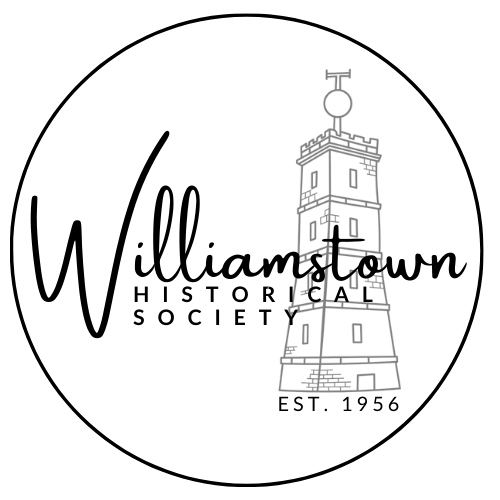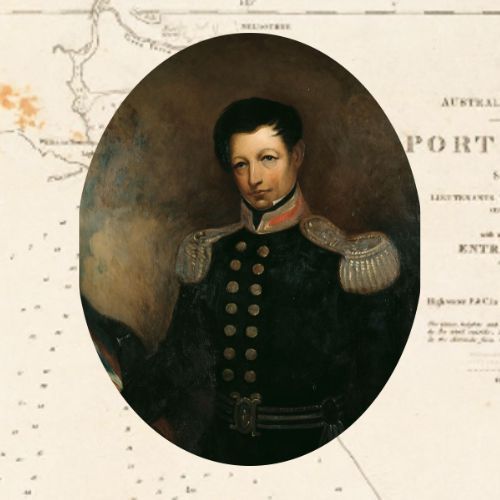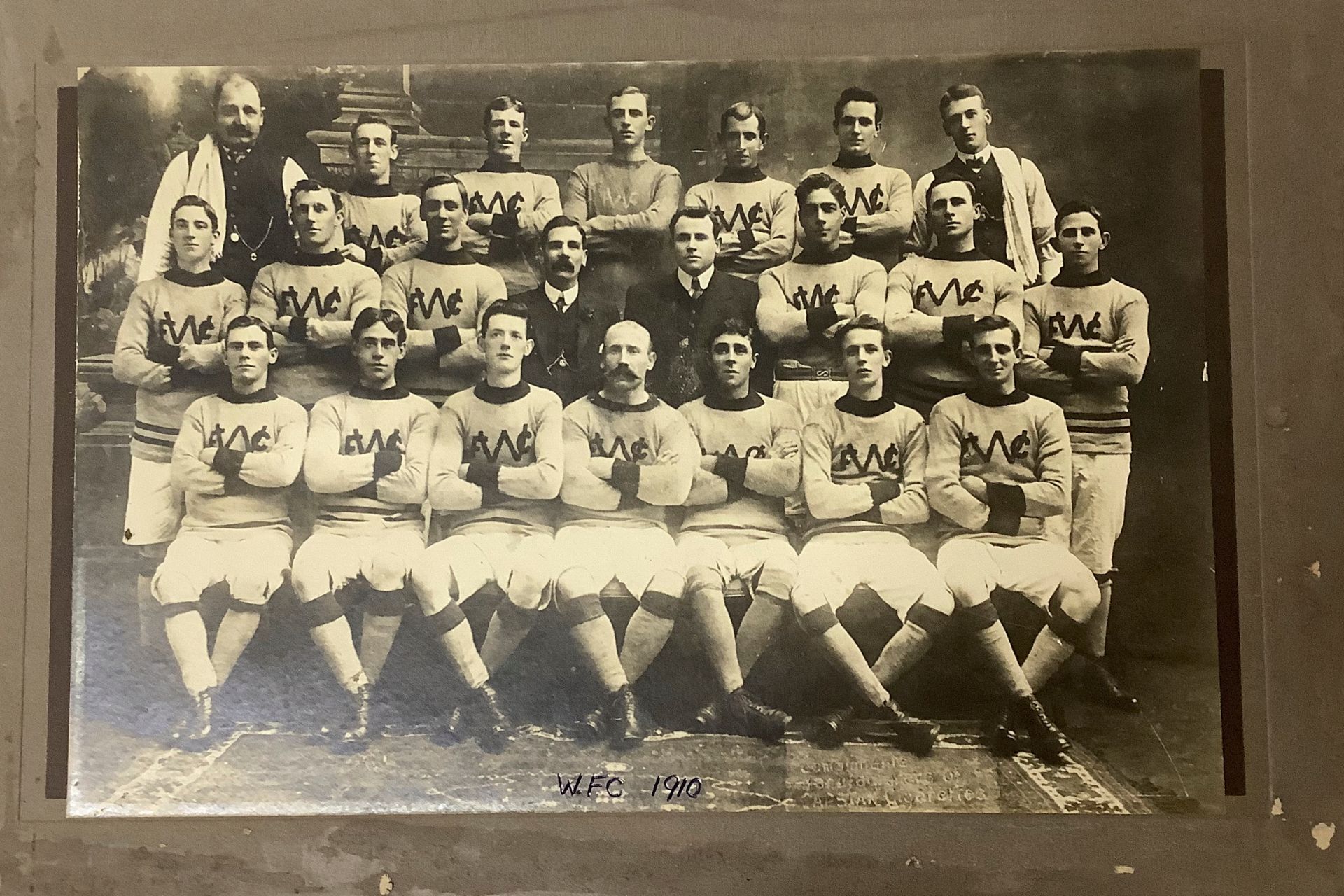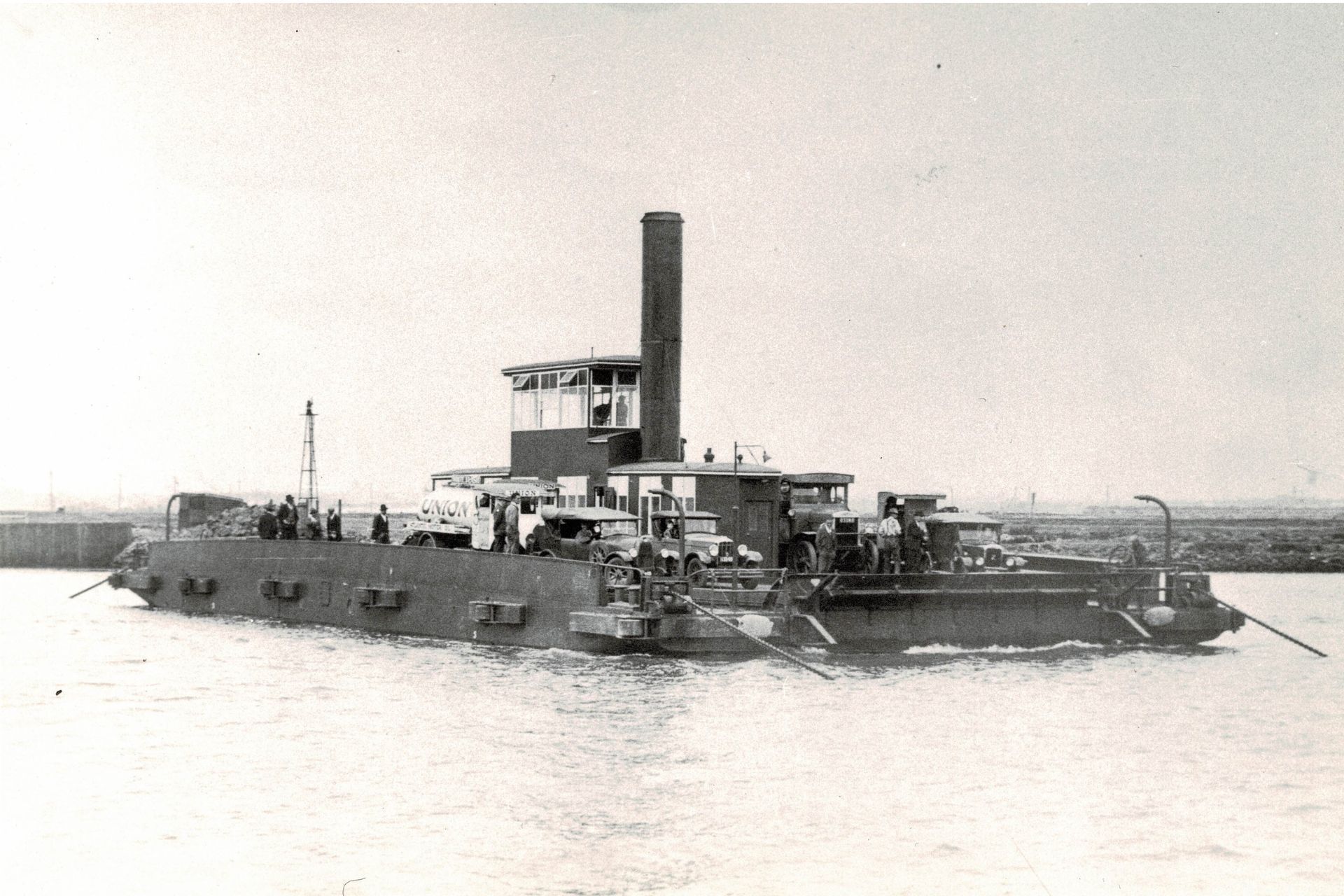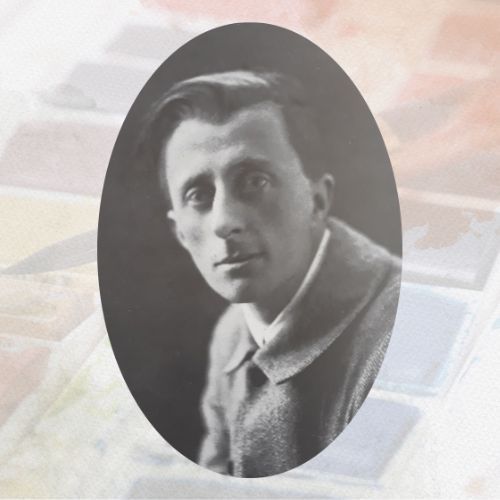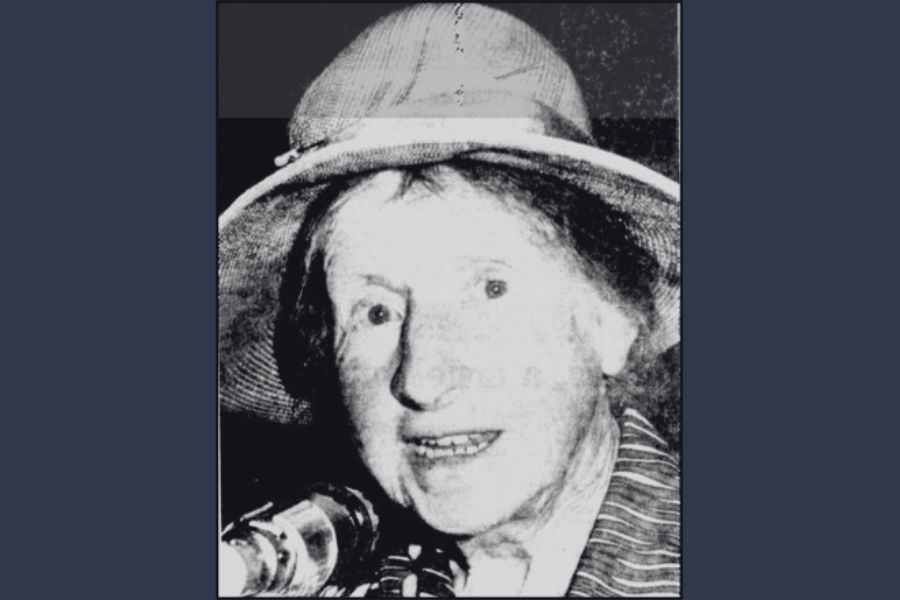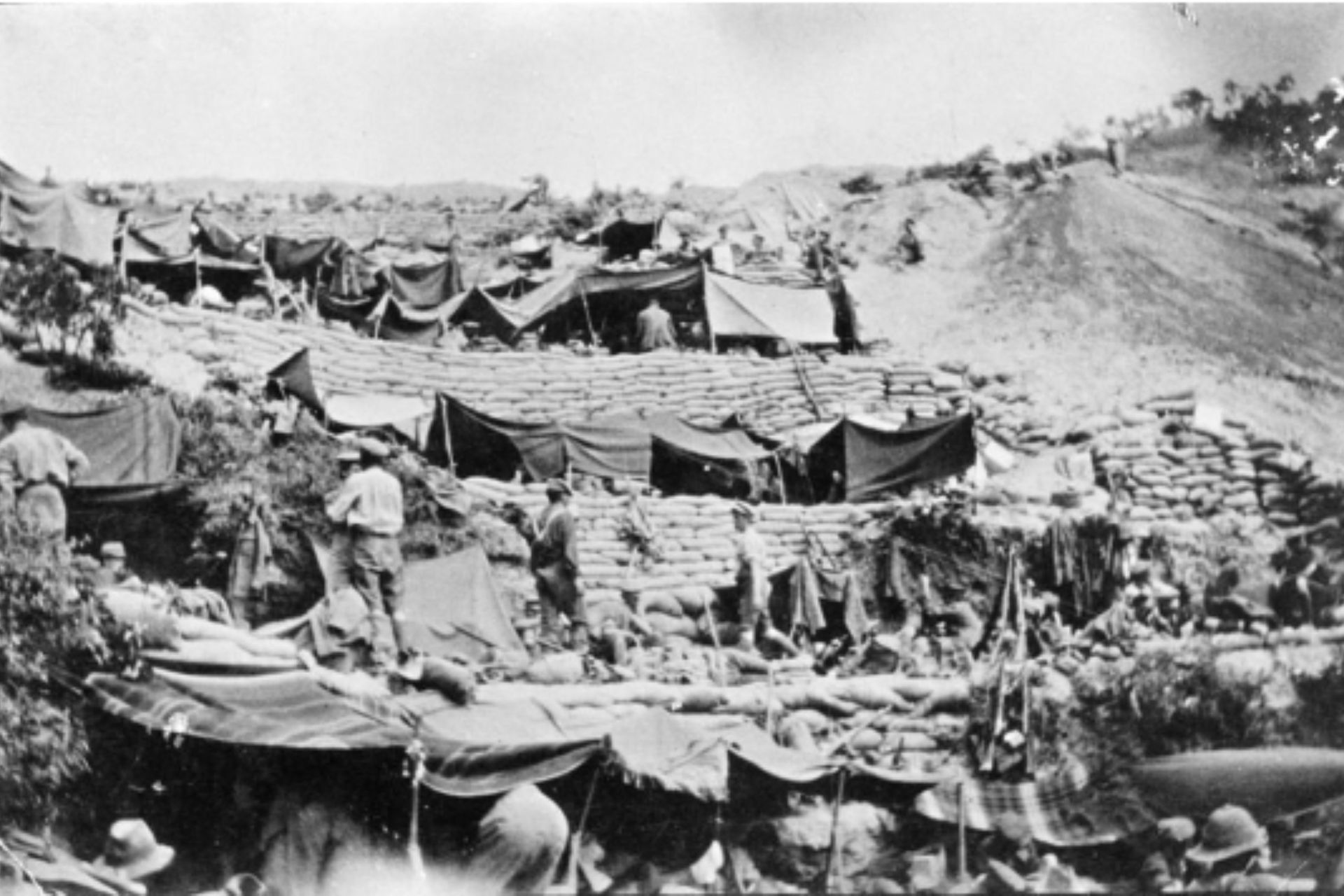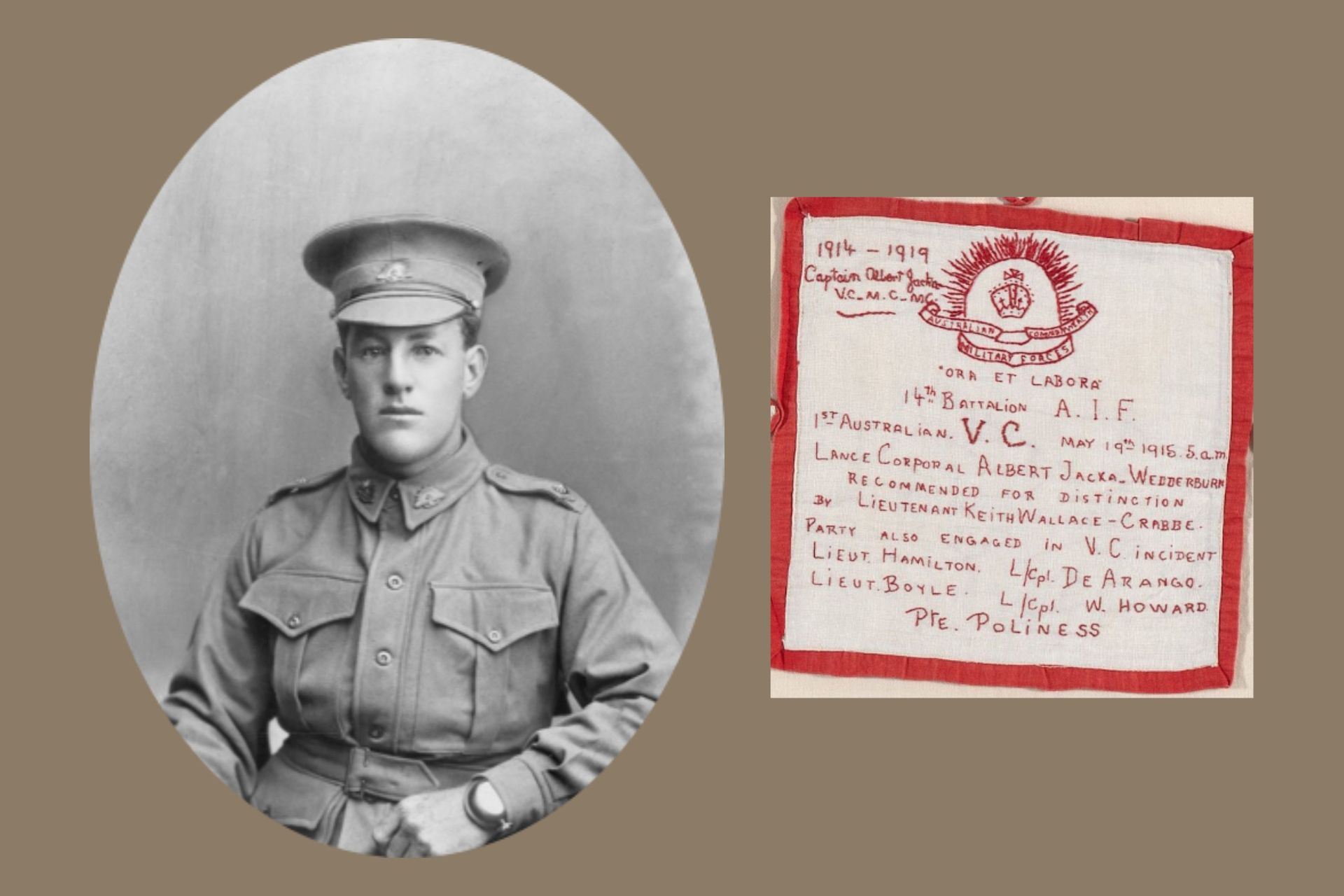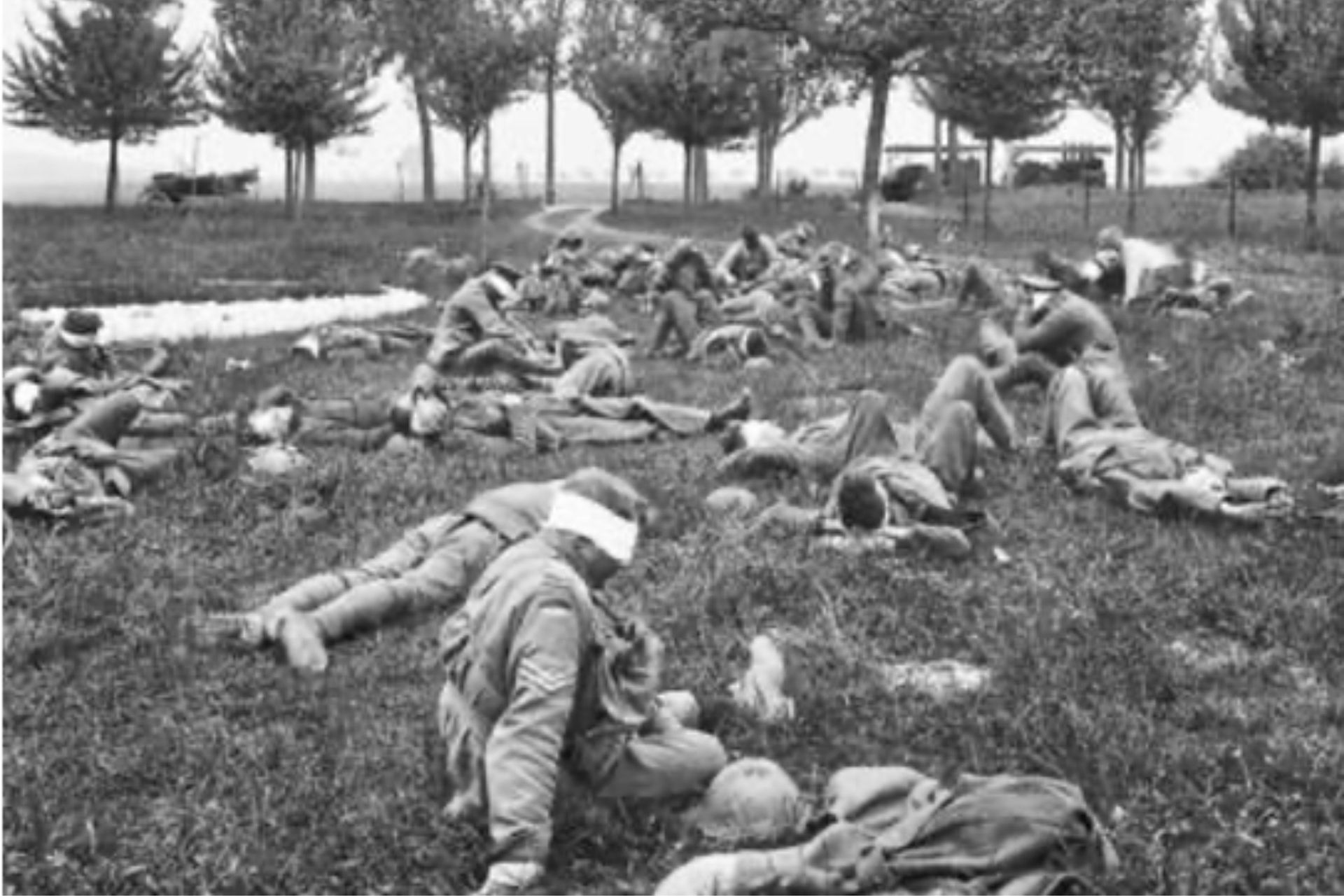Charles Steedman & the beginning of swimming's modern era
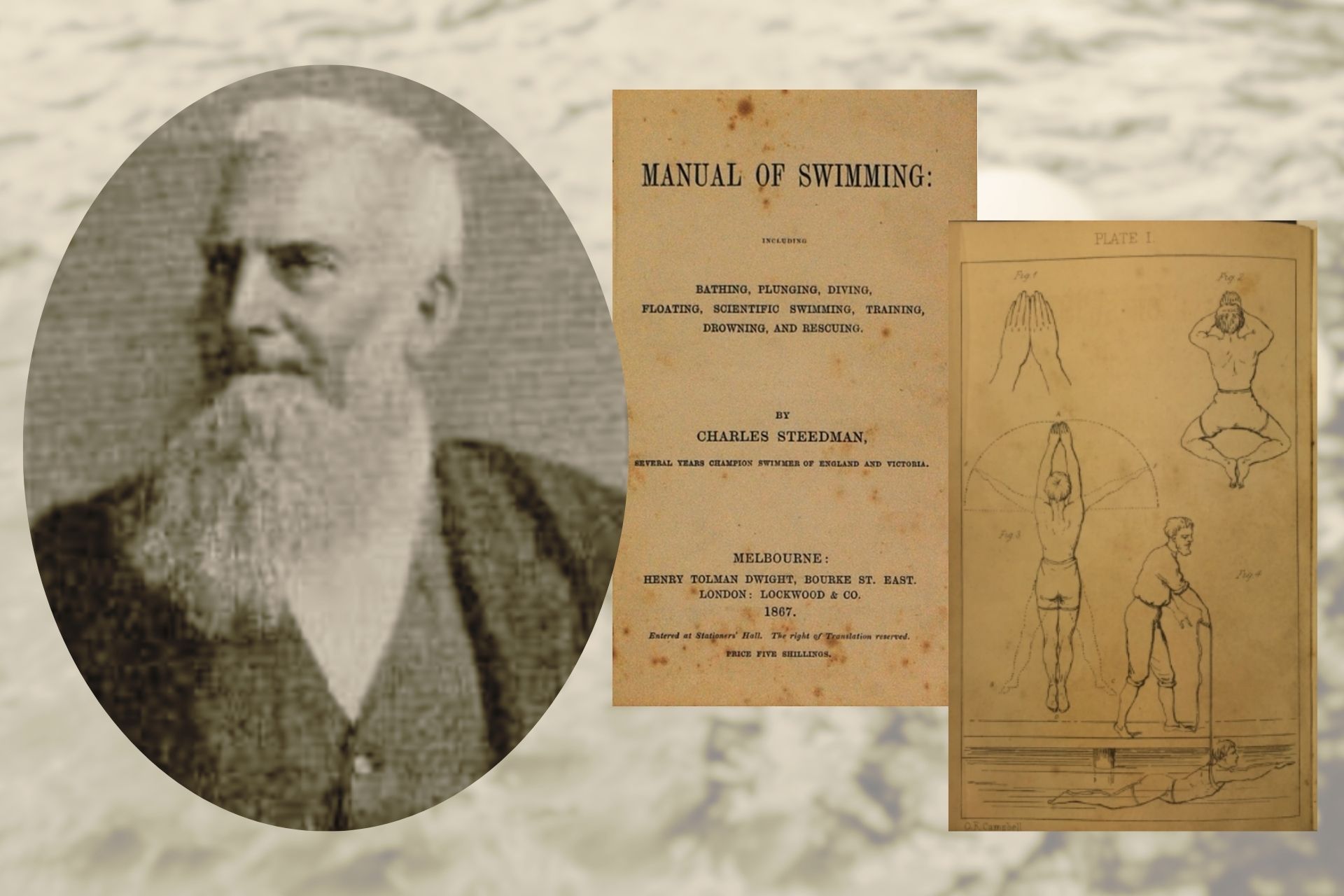
In 1867, Charles penned a book titled the "Manual of Swimming", a work considered the beginning of swimming's modern age.
While reading through some past editions of the WHS Newsletter, I stumbled upon an intriguing article from 2006 that showcased the incredible achievements of Charles Steedman. Charles was not only a local resident and an esteemed headmaster of Williamstown Grammar School, but also a champion swimmer and published author.
In 1867, Charles penned a book titled "Manual of Swimming," a work considered by the ‘Sport Australia Hall of Fame’ to mark the beginning of swimming's modern era. This comprehensive manual provided early descriptions of racing strokes, and training methods, and contributed significantly to the development of 'speed swimming', diving, water safety, and the health benefits of bathing.
Tuning into the Paris 2024 Olympic Games each night, you can’t help being captivated by the remarkable performances of swimming and diving competitors. The athletes effortlessly glide through the pool, demonstrating their mastery in butterfly, breaststroke, backstroke, and freestyle. Meanwhile, the diving teams leap from great heights, twisting and turning through the air before elegantly entering the water. It's incredible to see how the sport has evolved over 170 years since Charles Steedman first published the "Manual of Swimming," one of the first instructional books on competitive swimming.
Charles Steedman was born in London on the 9th of July, 1831 to John and Margaret, being the second of four children. Like many at the time, he left school at the age of eleven and started working as a mapmaker, colouring maps. At thirteen, he began working as a chemist's assistant, and by the age of fourteen, he was apprenticed to a cabinetmaker. He attended evening classes to improve his language and mathematics skills. By nineteen, he used his newly acquired understanding of mathematics to help accurately measure and fit spruce soundboards, becoming a successful piano maker.
Charles first learned to swim at the age of thirteen and excelled at the sport as in the other areas of his life. He was swimming competitively by the age of fifteen. In 1849, a nineteen-year-old Charles, swam in the National Championships, beating G. Pewters. Pewters was a master at the popular new racing style of the day – the sidestroke. Charles won the Surrey Club Championships in 1852 and 1853, defeating Frederick Beckwith with his exceptional skill. This event was often regarded as the Championship of England.
An accomplished champion swimmer in England, Charles set out to explore the world, arriving in Port Phillip Bay during the height of the Victorian gold rush in the 1850s. His arrival in Melbourne in 1854 created great interest amongst local swimmers who had heard of his successful feats in England. He shared his advanced knowledge of swimming techniques with his new countrymen and continued swimming competitively in Victoria, winning many championships, teaching swimming and participating in swimming exhibitions with fellow master swimmers.
In late January 1859 Steedman competed in a grand swimming match held at Captain Kenney’s St Kilda Bathing Ship. The bathing ship was moored near the current site of the Royal Melbourne Yacht Squadron at St Kilda. An excited crowd of 700- 800 spectators witnessed the races, including exhibitions of diving, floating and life-saving, A headline race also featured Pewters, Steedman’s old foe from England. Steedman swam the 300-yard race, using a wheel-like motion with his arms, in a time of 4 ¾ minutes, winning the race. He was awarded a ‘Silver Cup and Case’ worth 35 Guiness. (The cup was rediscovered in 2000).
Charles married Christina McFarlane (1837-1861) in Melbourne in 1856, and a few years later their only son, Charles Ernest (b.1861) was born. Tragedy struck when Christina died a week after giving birth at the young age of 25.
After becoming a widower, Charles married again in 1864 to Sarah Blanche Toy (1841–1913), a union that lasted his lifetime.
Charles earned a living as a journalist and was registered as the lessee and manager of the Hobsons Bay Railway Sea Bathing Company’s Baths near Sandridge Pier in 1864. He was a member and instructor at the Victorian Swimming Club, with his pupils competing in regular events.
In 1867 Steedman published the ‘Manual of Swimming’, drawing on his extensive personal swimming experience to provide a practical manual. “As a book written by an experienced, champion swimmer, it contains some of the earliest descriptions of racing strokes and training methods and was the first major technical contribution to the new sport of ‘speed swimming’. The ‘Manual of Swimming’ includes bathing, plunging, diving, floating, scientific swimming training, and how to save someone from drowning”.He describes “the Native American Indians as swimming with an alternative continuous arm action, which was a type of crawl stroke”. This reference predates others by at least 30 years. His book was published with great success in London, confirming his recognised expertise and influence in the developing years of the sport
Charles Steedman bought Abberton House (Mandalay), located on the corner of John Street and The Strand, Williamstown, from Sir George Verdon in 1869. (Verdon was one of the first trustees of the Williamstown Grammar School and a member of parliament, who was appointed as the first Agent-General of Victoria to London. He received a knighthood for his services to the colony in 1872).
In 1870, a knowledgeable and articulate Steedman, took up the lease of the Williamstown Grammar School in an agreement with the schools’ trustees, Sir George Verdon and John Courtis, effectively saving it from closure. He was appointed headmaster from 1870-1876 and again from 1885–1890. As headmaster in 1885, he added swimming lessons to the curriculum.
Steedman was a member of the Williamstown Swimming Club, hosting meetings and judging events held at Williamstown’s ‘Bunbury Baths’. One Saturday afternoon in 1885, the Williamstown Advertiser reported some 300 spectators witnessed eight events, which were hotly contested. Mr Steedman, “ex-champion" of England, gave an exhibition of swimming and lifesaving, which was one of the grandest displays of swimming ever witnessed in Victora”. He was a strong advocate for learning to swim and saved many people from drowning, without receiving any recognition or accolades.
Charles Steedman lived in Abberton House on The Strand until he died in 1901 at the age of 71. He is buried in the Williamstown Cemetery. His widow Blanch sold the house to Captain William Hearn in 1913, who renamed it “Mandalay” as it is known today. He was survived by his wife, Sarah Blanche and son, Charles.
After more than a century since his passing, his substantial contributions to the sport of swimming were finally acknowledged at both national and international levels. He was honoured with induction into the International Swimming Hall of Fame in 2000, and later into the Sport Australia Hall of Fame in 2006.
Charles Steedman's home for many years, Abberton House (also known as Mandalay), is up for sale. We can only dream that perhaps a champion of Australian Swimming, with deep pockets and a passion for history, could resurrect it to its former glory. Naturally, any plans would include the addition of a sparkling swimming pool overlooking the bay where it all began.
Notes:
Williamstown Grammar School was established in 1867, and run by well-known Williamstown identities as the first trustees of the school. However, despite early challenges regarding permanent facilities and financial woes, the school not only survived (with a name change) – it has thrived. Now known as Westbourne Grammar, it still maintains a junior campus on The Strand, in Williamstown, as well as a large purpose-built campus in Truganina (with a swimming pool – of course), operating successfully as one of the largest private grammar schools in the western suburbs of Melbourne.
References:
- Williamstown Historical Society, Newsletter No. 215, September 2006
- Photo: Williamstown Historical Society Collection: Former headmaster of Williamstown Grammar School (Westbourne Grammar) School held in the house in 1886,
- The Age (Melbourne, Vic 1854 – 1954), Mon 31 Jan 1859, page 6, “Swimming Matches at St Kilda”, http://nla.gov.au/nla.news-article154837049
- The Argus (Melbourne, Vic.: 1848 – 1957), Fri 18 March, 1859, page 8, advertising, “ Swimming Matches”,https://trove.nla.gov.au/newspaper/article/5678087?searchTerm=swimming%20races%20Charles%20Steedman
- The Argus (Melbourne, Vic.: 1848 – 1957), Sat 12 March, 1859, page 8, advertising, “Grand Swimming Matches”, https://trove.nla.gov.au/newspaper/article/5677805?searchTerm=swimming%20races%20Charles%20Steedman
- The Herald (Melbourne, Vic 1861-1954), Mon 9 Feb, 1863, page 6, “Swimming Matches at Sandridge”, http://nla.gov.au/nla.news-article244295676
- South Australian Weekly Chronicle, Sat 31 Dec 1864, page 5, Lessee of Sandridge Baths, https://collections.sea.museum/en/people/1116/charles-steedman)
- The Herald (Melbourne, Vic 1861-1954), Mon 9 Feb, 1863, page 6, “Swimming Matches at Sandridge”, http://nla.gov.au/nla.news-article244295676
- The Argus (Melbourne, Vic, 1848 – 1957), Mon 25 Feb, 1867, page 6, “Swimming Matches at Sandridge”, https://trove.nla.gov.au/newspaper/article/5786926?searchTerm=swimming%20races%20Charles%20Steedman
- Westbourne Grammar School Archives: https://victoriancollections.net.au/items/5f2213ff3f32f40784841123
- Ballarat Star (Vic: 1865 - 1924), 20 Feb 1867, page 2, “Review”, http://nla.gov.au/nla.news-article112861599,
- Ancestry.com. Births, Deaths & Marriages.
- Geelong Advertiser (Vic.:1859 – 1929), Fri 6 March, 1874, page 2, “Lecture by Mr Charles Steadman (sic) – The Art of Swimming”.
- https://trove.nla.gov.au/newspaper/rendition/nla.news-article147366756.3.pdf?followup=5b3e7028d3618d2a5731fdebae6cabeb
- Geelong Advertiser (Vic.: 1859 – 1929), Fri 6 March, 1874, page 2, “Annual Swimming Matches”, https://trove.nla.gov.au/newspaper/rendition/nla.news-article147366757.3.pdf?followup=38b8e7004ec77dd983659378d7995595
- Weekly Times (Melbourne, Vic: 1869 – 1954), Sat 9 Feb 1878, pg 5, “Swimming”
- Williamstown Advertiser (Vic. : 1875 - 1954), 4 Apr 1885, p. 2, “Swimming”, http://nla.gov.au/nla.news-article270752304
- International Swimming Hall of Fame: https://ishof.org/honoree/?_sf_s=steedman
- Sport Australia Hall of Fame: https://sahof.org.au/hall-of-fame-member/charles-steedman/
- The Argus (Melbourne, Vic.: 1848 – 1957), Sat 12 March, 1859, page 8, advertising, “Grand Swimming Matches”, https://trove.nla.gov.au/newspaper/article/5677805?searchTerm=swimming%20races%20Charles%20Steedman
